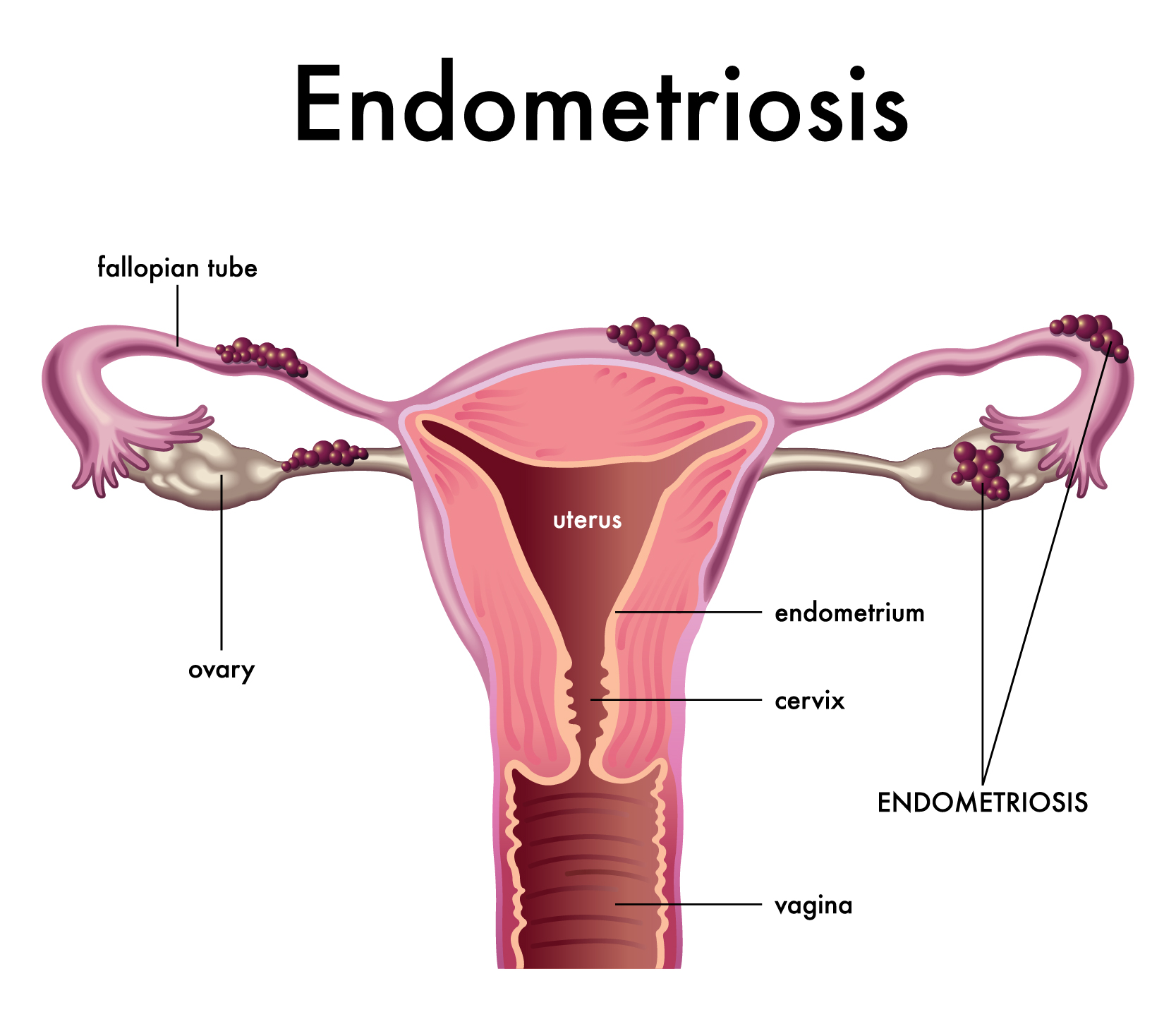Putting Together the Puzzle of Endometriosis – Understanding, Diagnosing, and Treating this Silent Battle
In the shadows of women’s reproductive health lies a condition that often goes undetected and misunderstood: endometriosis. This condition affects about 1 in 10 of women of reproductive age1, causing debilitating pain and disruption of their lives. In this blog post, we look at what endometriosis is, available diagnostic methods, common signs and symptoms, and available treatment options. Join us as we piece together the puzzle and empower women to take charge of their health.
What is Endometriosis?1
Endometriosis is an intricate condition where tissue similar to the lining of the uterus, known as the endometrium, grows outside of the uterus. This misplaced tissue can appear in various areas, such as the ovaries, fallopian tubes, and pelvic cavity. This in turn leads to inflammation, scarring, and chronic pain.
Figure 1, below, shows the anatomy of the uterus and surrounding areas affected when suffering from endometriosis.

Figure 1: The anatomy of the uterus and areas affected when suffering from endometriosis
Recognizing the Signs1 2
Endometriosis presents with a wide range of signs and symptoms, which may include the following:
(a) Severe Pelvic Pain: Experiencing debilitating pain during menstruation or throughout the menstrual cycle is a common sign of endometriosis. The pain can extend to the lower back and legs, interfering with daily activities.
(b) Painful Intercourse: Endometriosis can cause deep pelvic pain during sexual intercourse, making it a distressing and uncomfortable experience.
(c) Infertility Challenges: Some women with endometriosis may face difficulties conceiving due to the impact of the condition on their reproductive organs.
(d) Irregular Bleeding: Heavy or irregular menstrual bleeding, as well as spotting between periods, may be associated with endometriosis.
Diagnosing Endometriosis1 3
Diagnosing endometriosis can be challenging as the symptoms may overlap with other conditions. However, healthcare professionals utilize several approaches, which may include the following:
(a) Medical History and Symptom Analysis: An in-depth discussion of symptoms, pain patterns, pain locations and taking a medical history provides some valuable insights for diagnosis.
(b) Pelvic Examination: A pelvic exam may assist in helping to identify any abnormalities or signs of endometriosis. However, it may not definitively confirm this condition.
(c) Imaging Tests: Ultrasound or Magnetic Resonance Imaging (MRI) scans may be used to visualize the pelvic area and detect any visible signs of endometriosis.
(d) Laparoscopy: This surgical procedure involves inserting a small camera through a tiny incision in the abdomen to directly visualize and diagnose endometriosis.
Empowering Treatment Options1 3
Treatment strategies for endometriosis focus on managing symptoms and improving quality of life. Available options may include the following:
(a) Heat therapy: (e.g., heating pads, hot compresses, heat patches, or soaking in a hot bath for relief) helps the muscles relax and promotes blood flow, this in turn may assist in pain management.
(b) Chronic Pain Management: Nonsteroidal anti-inflammatory drugs (NSAIDs) can help alleviate pain.
(c) Hormonal therapies: Combined oral contraceptives or progestin-only hormone therapies are also used. Speak to your healthcare practitioner about Actor Pharma’s solution in Endometriosis treatment
(d) Surgical Interventions: In cases where conservative treatment is ineffective, laparoscopic surgery may be recommended to remove endometrial implants, adhesions, or cysts.
(e) Assisted Reproductive Techniques: For women struggling with infertility due to endometriosis, assisted reproductive techniques (ART’s) like in vitro fertilization (IVF) may be considered.
Disclaimer: The information provided in this blog post is for educational purposes only and should not replace professional medical advice.
References:
1. The American Congress of Obstetricians and Gynecologists. (2019). Endometriosis. Retrieved from https://www.acog.org/womens-health/faqs/endometriosis
2. The Mayo Clinic. (2021). Endometriosis. Retrieved from
https://www.mayoclinic.org/diseases-conditions/endometriosis/symptoms-causes/syc-20354656
3. The Mayo Clinic. (2018). Endometriosis: Diagnosis. Retrieved from
https://www.mayoclinic.org/diseases-conditions/endometriosis/diagnosis-treatment/drc-20354661
Editor: Dr Liesl Brown Ph.D

Understanding Oral Contraception
Endometriosis Facts
Emergency Contraceptives
Empowered Menopause